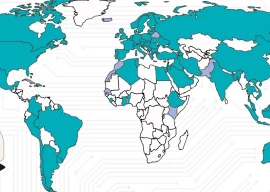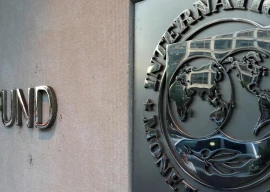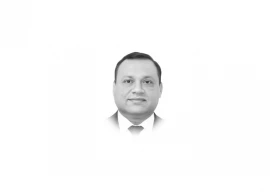
When it comes to health indicators, Sindh lags behind in each one when compared to both national as well as international figures. It spends just $18 per capita when the recommended figure is $34.
For instance, the infant mortality rate or the number of babies dying nationally is 78 out of 1,000 live births. In Sindh, it is higher at 81 out of 1,000 babies. The 2015 millennium development goal wants it to be lowered to 40. Similarly, Pakistan’s national maternal mortality rate is 276 out of 100,000 mothers dying while giving birth. In Sindh it is 314.
That is why, instead of just spending on individual programmes, the Sindh health department has envisioned the establishment of a body that would focus on the improvement of the entire health system, how it delivers and works. That body is now called the Health Sector Reforms and Support Unit (HSRU). It was launched on Friday at the Pearl Continental Hotel by Health Minister Dr Sagheer Ahmed.
The unit has been established with the help of USAID’s technical assistance unit for health and the World Health Organisation.
The unit’s chief, Kiran Nauman, said that the 18th constitutional amendment meant that a health policy and reforms unit needed to be in place. Some of Sindh’s challenges include getting its various programmes to work in tandem. They include the immunisation work, lady health workers, polio groups among others. The cost of services, skill development programme and establishment of a health services academy need focus, she said.
The Health Sector Reforms and Support Unit will work as a project for three years and will then be transferred to the non-development side of the budget.
Not enough money is spent and invested on Sindh’s health system. People heavily rely on private hospitals and clinics. There is also confusion over the transfer of critical responsibilities from the federal to provincial levels. There is insufficient regulation of the public and private sector, insufficient health district mapping and planning and inadequately planned human resources for health.
Thus the unit hopes to set up a think tank, develop policy and strategy, provide technical support and assistance to the health department as more and more responsibilities are handed over to the provincial government.
It also aims to act as a data management, monitoring, research and evaluation body and provide help with policy making. Dr Sagheer Ahmed said that the project was among the top priorities. “It will act as a think tank and help design the health policy and strategy in Sindh, improving the health of 55 million people,” he said. “It will work on a provincial health policy, human resources, a health system support, disaster and emergency management, private sector involvement and coordination of donor funded projects and other innovations.”
This will strengthen the partnership and coordination between national and international stakeholders.
“Improving the health of the people of Pakistan is one of the top priorities of the United States,” said Edward Birgells, the regional director of USAID. It gave Rs270 million in a grant for the unit.
USAID is already working on health in Sindh, with projects such as the obstetrics ward at JPMC, which will be completed by September, a new hospital in Jacobabad and the renovation of the water system in the city. The US has just approved another $300 million in aid for mother and child health, most of which will be given to Sindh.
Health DG Dr Ferozuddin Memon concluded the ceremony with a vote of thanks.
Published in The Express Tribune, May 19th, 2012.
COMMENTS (1)
Comments are moderated and generally will be posted if they are on-topic and not abusive.
For more information, please see our Comments FAQ






























i hope they succeed in using it productively..